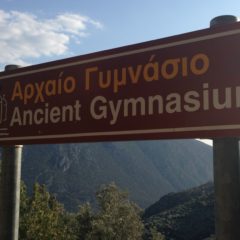I wrote last time about my experience of volunteering in Greece; part of the excitement was living in a country with an unfamiliar language AND script. I knew I wouldn’t learn much Greek, but was hoping to put myself in the position of some of my learners, when they encounter the English script for the first time.
Of course, in some ways it was nothing like the experience of those learners: so many signs were in English as well as in Greek – and everywhere I went, some kind person would help me out by explaining things in English.
In addition, because of the letters that Greek and English share, I was at a big advantage – but I still had major problems.
Thoughts on being a ‘prelim’ (CPSWE) learner
Here are my thoughts…
- That I understand being slow. Sitting on the bus, I found I could only work out the first three letters of a word before we’d gone past.
- That words do not stick in my head unless I see them over and over again.
- That my learners’ b/d confusion is unsurprising to me. I was in a constant l/n muddle.
- That skipping the sounding out and going for guessing can be a disaster (getting on the wrong bus!!)
- That it’s almost worse when letters look the same but aren’t the same: what looks like BIKTOPIA is actually Victoria…
- That fancy font is the downfall of the new reader. I’m thinking of posters and notices in particular, where I couldn’t work out what the letters actually were.
- That it’s so helpful to find words in the new language that relate to to your own language – of course that was often the case for me, but for so many learners, that just doesn’t happen.
The take-aways?
It was a good reminder that the ‘slow readers’ in my beginner class are not actually slow – they’re doing amazingly well, often in a totally unfamiliar script that goes in the wrong direction. It was also a reminder of just how much practice I need to offer, to help them develop that automaticity…
So, off to think of some ways to support that practice…









